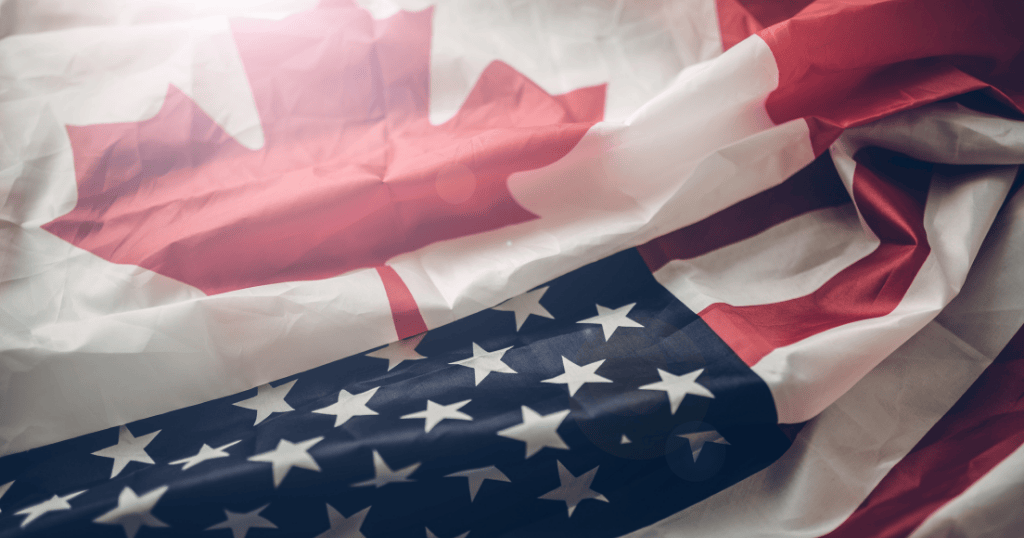
The imposition of customs tariffs provoked numerous reactions and with the large volume of available information, it can be difficult to navigate. To better address the current situation and understand it more clearly, we present you with some strategies to minimize the economic impact on businesses as well as a summary of measures announced since President Trump’s inauguration.
What’s happening right now with the U.S. customs tariff changes?
Currently, none of the tariff measures announced since the beginning of the year are operational yet. Indeed, the leaders of the concerned states announced a 30-day delay starting from February 4, which postpones the implementation of the tariffs.
On February 10, 2025, the U.S. President signed two additional decrees: Adjusting Imports of Aluminum Into the United States and Adjusting Imports of Steel into The United States. These impose a 25% tariff on all aluminum and steel imports to the U.S. These tariffs are expected to take effect on March 12, 2025, unless delayed further.
As a result, the increased tariffs from the U.S. could negatively affect Quebec and Canadian businesses doing business with the U.S. (e.g., increased operating costs, reduced revenue, impact on profit margins, impact on cash flow, etc.).
Helping your business face new customs tariffs: Adopting the right business strategies
We suggest 5 areas to explore to help your business face the U.S. tariff increases:
1. Review contracts and supply chains
The new tariffs may impact the entire supply chain, increasing manufacturing costs that affect both the buyer and the seller of the product.
It would be wise to analyze supply or purchase contract clauses, particularly to identify:
-
- Clauses for price adjustments in case of cost increases;
- Clauses allowing contract termination due to tariff increases;
- Exemption clauses;
- Other relevant clauses given the circumstances.
An assessment of the diversification of your supply chains/export plans would be helpful to limit the economic impact of the new tariffs.
This evaluation could include changes related to sourcing and the export of your products to other Canadian provinces. Although interprovincial trade also faces tariff barriers, it is important to note that a desire for change and simplification of trade has emerged following the threat of U.S. tariffs. This is an avenue worth exploring.
2. Analyze your financial situation under different scenarios
Several questions remain unanswered for now: will tariffs actually be imposed after the 30-day grace period? Will the U.S. President increase these tariffs? What non-tariff measures will be added?
Given these uncertainties, analyzing your financial situation, both medium and long-term, based on assumptions specific to your business market will help anticipate the impacts on your company.
3. Evaluate additional markets to grow your business
Free trade agreements not only facilitate trade but also reduce or eliminate customs barriers between countries. It may be relevant to examine markets with which Canada has such agreements, such as the Comprehensive Economic and Trade Agreement (CETA) with the European Union, to explore new business opportunities.
4. Check your business’s eligibility for financial assistance
Several programs have been implemented to support businesses affected by the imposition of tariffs1. Both provincial and federal governments have committed to supporting companies impacted by these new tariffs. It will be important to monitor the establishment of these programs.
5. Protect your business through the Law
In cases of serious financial difficulties, our Bankruptcy, Insolvency, and Restructuring team can assist you in setting up a Recovery Plan under applicable Canadian insolvency laws (Bankruptcy and Insolvency Act (BIA) and Companies’ Creditors Arrangement Act (CCAA)).
Contact us today!
Summary of U.S. tariff measures since early 2025
On February 1, 2025, the U.S. signed three decrees related to cross-border trade, affecting Canada, China and Mexico.
The tariff decree affects Canada
The decree concerning Canada, titled Imposing Duties to Address The Flow of Illicit Drugs Across Our Northern Border, was set to take effect on February 4, 2025. It is based on two legislative texts: the International Emergency Economic Powers Act (IEEPA) and the National Emergencies Act (NEA), which grant the U.S. President the power to respond to national emergencies. Thus, following the White House’s reasons regarding illegal immigration and drug trafficking, a national emergency was declared, authorizing the imposition of tariffs.
This decree imposes a 25% tariff on all Canadian products, except for energy resources, which will face a “lower” tariff of 10%. It also puts an end to the “de minimis” exemption, meaning all imports with a value under $800 will now be subject to these tariffs.
It is important to note that this decree allows the U.S. to increase tariffs in retaliation for any Canadian actions.
Canada responds to U.S. tariffs
As countermeasures, Canada announced the implementation of retaliatory measures in two phases, including increased tariffs on products from the U.S., representing an annual import value of approximately $30 billion starting from February 4.
Subsequently, Canada plans to impose a 25% tariff on $155 billion worth of goods exported to Canada by the U.S. Prime Minister Justin Trudeau also emphasized in his public statements that Canada could add non-tariff measures.
Canadian provinces, including Quebec, also announced retaliatory measures. For example, the Quebec Government has requested that the SAQ remove all U.S. products from its shelves.
Finally, given the uncertainties of customs tariffs and their potential impact, it is crucial for businesses to be prepared. Staying informed and responsive will help you navigate this context of trade tensions with more ease. Do not hesitate to contact us if you have any questions! Our team of lawyers will be happy to assist you in facing these potential tariff changes.
Contact us today!
1. For example, the Caisse de dépôt et placement du Québec (CDPQ) has launched an initiative offering flexible financing for companies affected by the increase in U.S. tariffs.

